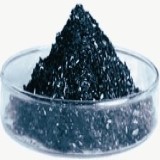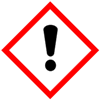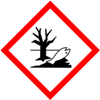 |
Potassium Permanganate SDS Safety Data Sheet of Supplier Exporter Manufacturers' Representative |
Email: info@ammol.org |
Call Toll Free +1-855-552-6665 |
Potassium Permanganate
CAS Number: 7722-64-7
Molecular Formula: KMnO4
Molecular Weight: 158.03

Potassium Permanganate
Potassium Permanganate SDS GHS, Safety Data Sheet
MSDS Sheet, Material Safety Data Sheet 19-Jan-25
1. PRODUCT DESCRIPTION
Product Name & Other Names: Potassium permanganate; Permanganic acid, potassium salt.
CAS Number: 7722-64-7
EINECS EC Number: 231-760-3
Relevant uses and uses advised against (if any): Industrial Manufacturing.
Suppliers: As per letterhead.
2. HAZARD IDENTIFICATION
GHS, Globally Harmonized System Classification in accordance with 29 CFR 1910
Classification according to Regulation (EC) No 1272/2008
Oxidizing solids Category 2, H272
Acute toxicity, oral Category 4, H302
Acute toxicity, dermal Category 4, H312
Skin corrosion Category 1C, H314
Hazardous to the aquatic environment, acute hazard Category 1, H400
Labeling according to GHS & Regulation (EC) No 1272/2008
GHS Label Elements Oxidizing Solid |
|
GHS Label Elements |
Signal Word: Danger
Hazard Statements:
H272: May intensify fire; oxidizer.
H302: Harmful if swallowed.
H312: Harmful in contact with skin.
H314: Causes serious skin burns and eye damage.
H400: Very toxic to aquatic life.
Precautionary Statements:
P210: Keep away from heat/sparks/open flames/hot surfaces. - No smoking.
P220: Keep/Store away from clothing/other combustible materials.
P221: Take any precaution to avoid mixing with combustibles.
P260: Do not breathe dust/fume/gas/mist/vapors/spray.
P270: Do not eat, drink or smoke when using this product.
P280: Wear protective gloves/protective clothing/eye protection/face protection.
P273: Avoid release to the environment.
P280-Wear protective gloves/protective clothing/eye protection/face protection.
P302+352: IF ON SKIN: Wash with soap and water.
P305+P351+P338: IF IN EYES: Rinse cautiously with water for several minutes. Remove contact lenses, if present and easy to do. Continue rinsing.
P362: IF SWALLOWED: Call a POISON CENTER or doctor/physician if you feel unwell.
P337+P313: If eye irritation persists: Get medical advice/ attention.
P370+378: In case of fire: Use dry chemical, CO2 or appropriate foam for extinction.
3. COMPOSITION/INFORMATION ON INGREDIENTS
Product Name & Other Names: Potassium Permanganate; Permanganic acid, potassium salt
CAS No.: 7722-64-7
EINECS EC Number: 231-760-3
4. FIRST AID MEASURES
Always seek medical attention after first aid measures are provided.
Emergency and First Aid Procedures:
Eyes - Immediately flush eyes with plenty of water for at least 15 minutes, lifting lower and upper eyelids occasionally. Get medical attention immediately.
Skin - Thoroughly wash exposed area for at least 15 minutes. Remove contaminated clothing. Launder contaminated clothing before reuse. Get medical attention at once.
Ingestion - If Potassium permanganate is swallowed, DO NOT INDUCE VOMITING. Give large quantities of water. Never give anything by mouth to an unconscious person. Get medical attention immediately.
Inhalation - Remove to fresh air. Give oxygen if breathing is difficult; give artificial respiration if breathing has stopped. Keep person warm, quiet and get medical attention at once.
5. FIREFIGHTING PROCEDURES
Extinguisher Media: Use dry chemical, CO2 or appropriate foam.
Auto ignition Temperature: N/A
Unusual Fire and Explosion Hazards: Potassium permanganate is strong oxidizer. Contact with combustible materials, flammable materials or powdered metals can cause fire or explosion.
Special Information: In the event of a fire, wear full protective clothing and NIOSH-approved self-contained breathing apparatus with full face piece operated in the pressure demand or other positive pressure mode.
6. SPILL OR LEAK PROCEDURES
Personal precautions, protective equipment and emergency procedures: Ventilate area of spill. Clean-up personnel should wear proper protective equipment. Avoid creating dust. Sweep or scoop up and containerize for disposal. Avoid breathing dust/fumes/gas/mist/vapors/spray. Use individual protective equipment (waterproof boots, suitable protective clothing, safety glasses, etc.).
Environmental precautions: Do not let the product enter drains, soil or water sources.
Methods and materials used for containment Cleanup procedures and Storage: Contain spilled material. Cover with an inert, non-combustible absorbent material, (e.g. sand, earth, diatomaceous earth, vermiculite). Vacuum or sweep-up and remove to an approved disposal container.
7. SPECIAL PRECAUTIONS
Precautions for safe handling: Apply according to good manufacturing and industrial hygiene practices. Ensure proper ventilation. Wash thoroughly after handling. Do not drink, eat or smoke while handling. Avoid contact with skin, eyes and clothing. Minimize dust generation. Avoid breathing dust/fumes/gas/mist/vapors/spray. Keep container tightly closed. Avoid ingestion and inhalation. Use individual protective equipment (waterproof boots, suitable protective clothing, safety glasses, etc.).
Conditions for safe storage, including any incompatibilities: Store in cool, dry and ventilated area away from heat sources and protected from sunlight in tightly closed original container. Keep air contact to a minimum. Do not leave the material container open. Store protected from heat, sparks and ignition sources and incompatible materials. Avoid inhalation of dust/mist/vapor. Do not store with incompatible materials like organic materials, combustible materials, strong reducing agents, strong acids, peroxides, alcohols, chemically active metals, flammable and combustible materials.
8. SPECIAL PROTECTION INFORMATION
Exposure Limits:
Chemical Name: Manganese and inorganic compounds, as Mn
ACGIH (TLV): TWA: 0.2 mg/m3(A4)
OSHA (PEL): STEL: C 5 mg/m3
NIOSH (REL): TWA: 1 mg/m3 / STEL: 3 mg/m3
Appropriate engineering controls: Handle in accordance with good industrial hygiene and safety practice. Wash hands before breaks and at the end of workday. Emergency eye wash fountains and safety showers should be available in the immediate vicinity of any potential exposure. Ensure adequate ventilation.
Respiratory Protection (Specify Type): None needed under normal conditions of use with adequate ventilation.
Ventilation System: A system of local and/or general exhaust is recommended to keep employee exposures as low as possible.
Personal Respirators (NIOSH Approved): For conditions of use where exposure to dust or mist is apparent and engineering controls are not feasible, a particulate respirator may be worn.
Skin Protection: Wear protective gloves and clean body-covering clothing.
Eye Protection: Use chemical safety goggles and/or full face shield where dusting or splashing of solutions is possible. Maintain eye wash fountain and quick-drench facilities in work area.
Other Control Measures: Maintain good housekeeping in work area. Handle in accordance with good industrial hygiene and safety practice.
9. PHYSICAL DATA
Appearance: Dark purple to bronze crystals.
Odor: Odorless.
Odor threshold: Not applicable.
pH: No information found.
Relative density: 2.7
Melting Point: Approximately 240C
Initial boiling point and boiling range: No information found.
Flash point: No information found.
Auto-ignition temperature: No information found.
Decomposition temperature: No information found.
Upper/lower flammability or explosive limits: No information found.
Vapor pressure: No information found.
Vapor density: No information found.
Evaporation rate: No information found.
Flammability (solid, gas): No information found.
Partition coefficient: n-octanol/water: No information found.
Solubility in Water: Moderate
Viscosity: No information found.
10. REACTIVITY DATA
Stability: Stable under ordinary conditions of use and storage.
Conditions to Avoid: Heat, combustible and organic materials.
Incompatibility (Materials to Avoid): Organic materials, combustible materials, strong reducing agents, strong acids, peroxides, alcohols, chemically active metals.
Hazardous Decomposition Products: None
Hazardous Polymerization: Will not occur.
11. TOXICITY DATA
Toxicity Data: Oral Rat LD50: 750 mg/kg
Carcinogenicity: This substance has no evidence of carcinogenic properties.
Mutagenic Effects: No information found.
Developmental Toxicity: No information found.
Reproductive Effects: No information found.
12. ECOLOGICAL DATA
AQUATIC TOXICITY
LC 50 (Rainbow trout, donaldson trout (Oncorhynchus mykiss), 96 h): 0.267 - 0.442 mg/l Mortality
LC 50 (Striped bass (Morone saxatilis), 96 h): 0.348 mg/l Mortality
LC 50 (Bluegill (Lepomis macrochirus), 96 h): 0.713 - 0.959 mg/l Mortality
Toxicity to fish, Gambusia affinis (fish, fresh water), LC100 = 18 mg/L/24 hours
Toxicity to daphnia and other aquatic invertebrates: Daphnia magna (Crustacea), EC0 = >0.63 mg/L
Toxicity to algae: Anabaena sp. (Algae), EC50 = <0.5 mg/L/18 days/growth rate
Results of PBT and vPvB assessment: This substance/mixture contains no components considered to be either persistent, bioaccumulative and toxic (PBT), or very persistent and very bioaccumulative (vPvB) at levels of 0.1% or higher.
13. DISPOSAL INFORMATION
Waste Disposal Methods: Dispose in accordance with all applicable regulations. Follow all the pollution control rules.
14. TRANSPORT INFORMATION
DOT USA, TDG Canada & ADR/RID Europe:
UN Number: UN 1490
Proper Shipping Name: Potassium permanganate
Hazard Class: Oxidizer
Packing Group: II
Division: 5.1
IMDG/IMO & IATA/ICAO:
UN number: UN 1490
Proper Shipping Name: Potassium permanganate
Transport hazard class(es): 5.1
Marine Pollutant: No
Packing group: II.
15. REGULATORY INFORMATION
USA:
SARA Codes: See section 2.
Section 16 - Additional Information
DISCLAIMER: The information and recommendations set forth herein are presented in good faith and believed correct as of the date hereof. It is compiled from various sources and it is not necessarily all inclusive nor fully adequate in every circumstance. In addition, these suggestions should not be confused with nor followed in violation of applicable laws, regulations, rules or insurance requirements applicable. This MSDS sheet is intended only as a guide to the appropriate precautionary handling of the material by a properly trained person using this product. Individuals receiving the information must exercise their independent judgment in determining its appropriateness for a particular purpose.
Please visit Main Page of Potassium Permanganate Suppliers.
American Molecules, also known as ammol.org is a distributor, supplier and manufacturers' representative of all types of Pharmaceuticals, Functional Ingredients, Excipients and Specialty Chemicals in Texas USA. Our principals manufacture supply and export USP NF BP, Ph Eur, etc grades of chemicals pure and reagent grade, mineral fortifiers, FCC food grade. Tailor made particle size and customized specifications are offered. The principal's facility is having one or more of the certifications like FDA approval and GLP, cGMP, ISO9001, ISO14001, ISO/IEC 17025, ISO22000, FSSC 22000, ISO45001, FSSAI, Kosher, HALAL, COPP, WHO-GMP certified and Written Confirmation (WC) for export to Europe is available. The manufacturers suppliers and exporters observe WHO Good Manufacturing Practices and Good Laboratory Practices.





Suppliers and Manufacturers' Representative:

9910 Bent Oak Dr
Houston, TX 77040, USA
Call Toll Free: 1-855-55-AMMOL 1-855-552-6665
Email: info@ammol.org

